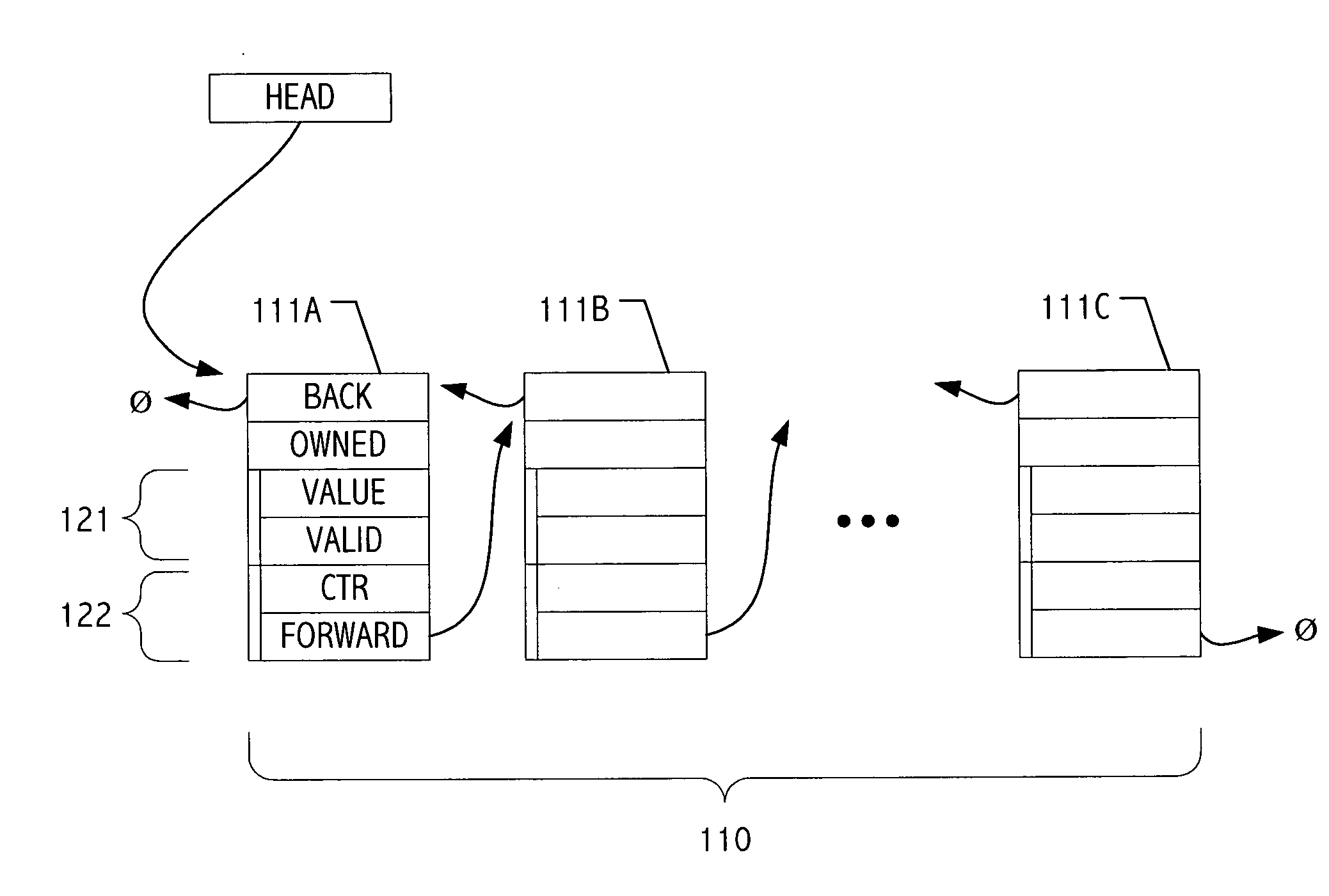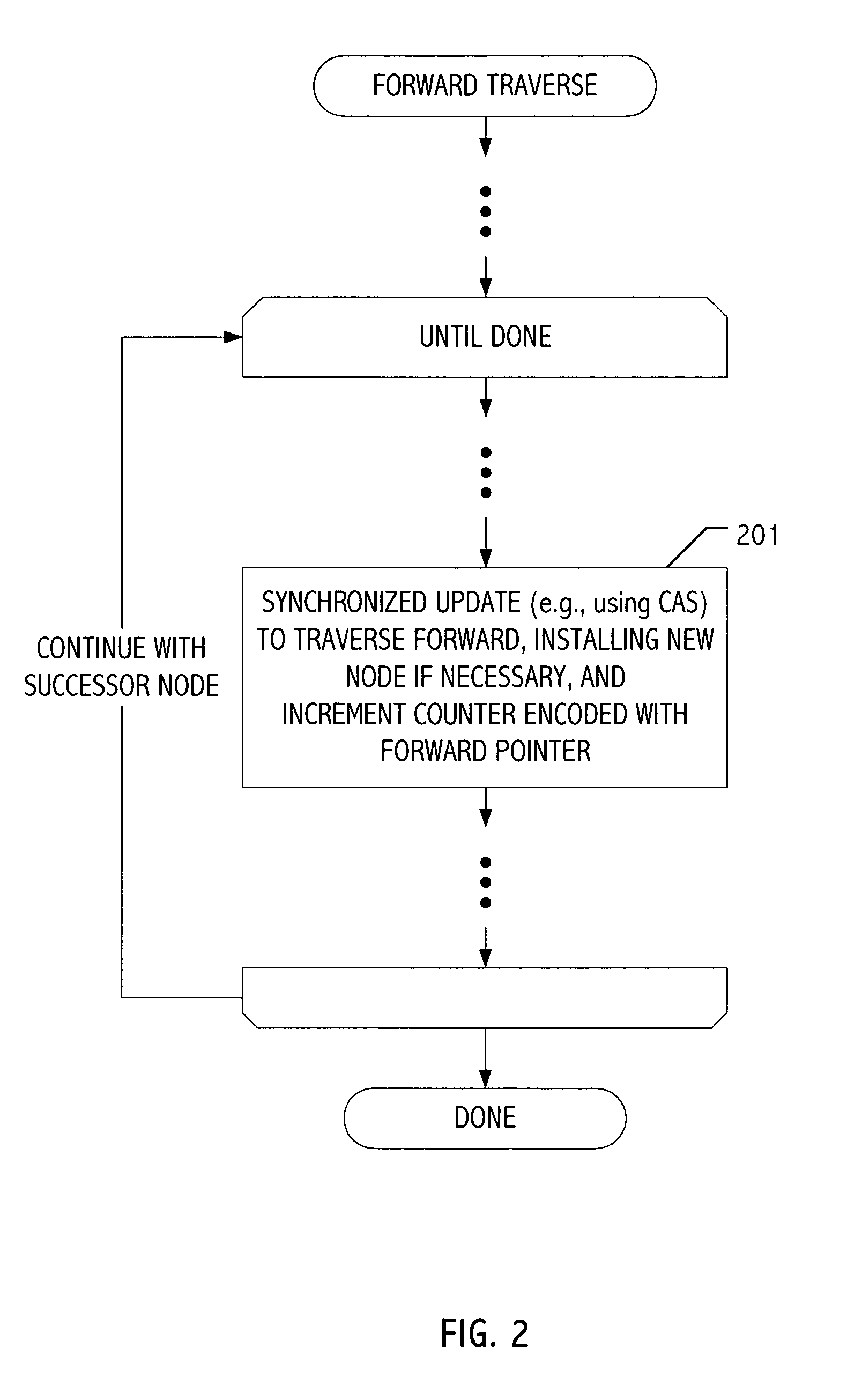Space- and time-adaptive nonblocking algorithms
a non-blocking algorithm and space technology, applied in the direction of multi-programming arrangement, program control, instruments, etc., can solve the problems of over-consumption and/or time complexity of such algorithms, over-consumption and/or time complexity, and incorrect behavior of such algorithms
- Summary
- Abstract
- Description
- Claims
- Application Information
AI Technical Summary
Benefits of technology
Problems solved by technology
Method used
Image
Examples
Embodiment Construction
)
[0015] There are various properties that can be used to characterize algorithms with respect to their time complexity, space requirements, and parameters required to be known in advance. Below, we describe other work that has led to the identification or definition of some of these properties, and also introduce some new properties. While much of the work summarized below may itself represent the state of art, we wish to emphasize that (1) our analysis and recognition of limitations or shortcomings therein as well as (2) our identification of aspects of our own techniques or those developed by others that contribute to useful solutions are not prior art and are not admitted as such. Therefore, subject to the foregoing, we now summarize and synthesize certain other work (including our own) in the areas of time-adaptive and space-adaptive nonblocking algorithms and properties.
[0016] Time Adaptivity Properties and Other Work
[0017] We begin by discussing the wait-free universal constru...
PUM
 Login to View More
Login to View More Abstract
Description
Claims
Application Information
 Login to View More
Login to View More - R&D
- Intellectual Property
- Life Sciences
- Materials
- Tech Scout
- Unparalleled Data Quality
- Higher Quality Content
- 60% Fewer Hallucinations
Browse by: Latest US Patents, China's latest patents, Technical Efficacy Thesaurus, Application Domain, Technology Topic, Popular Technical Reports.
© 2025 PatSnap. All rights reserved.Legal|Privacy policy|Modern Slavery Act Transparency Statement|Sitemap|About US| Contact US: help@patsnap.com



